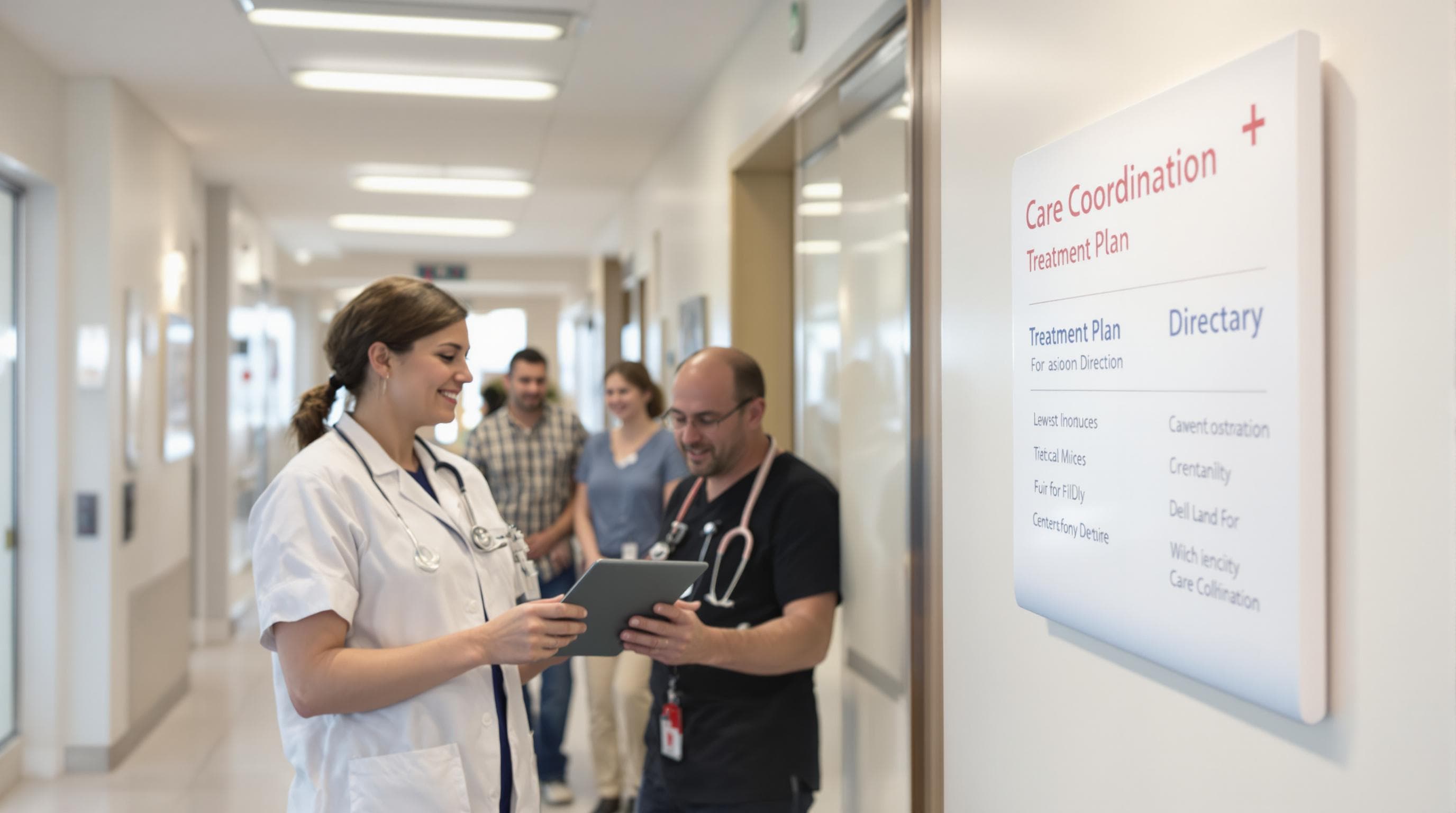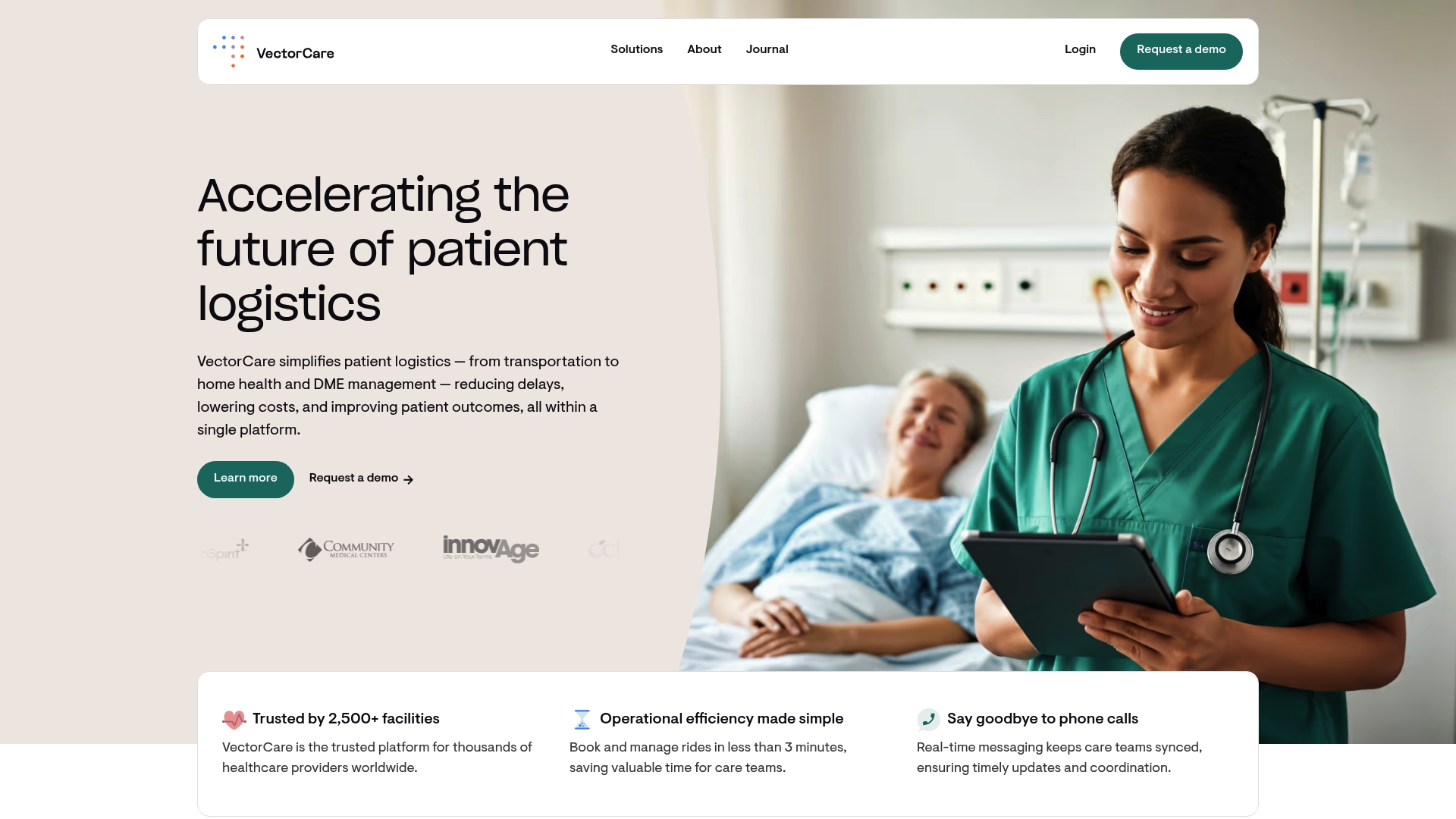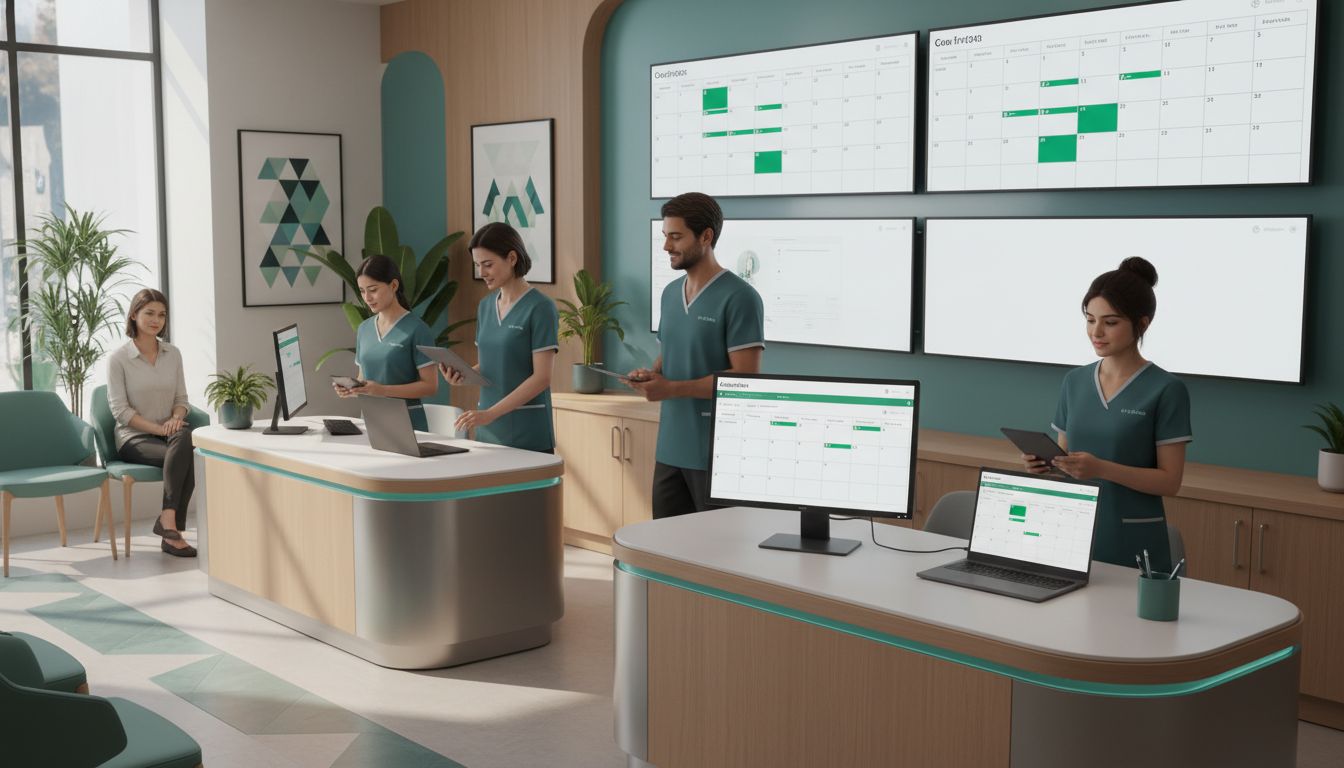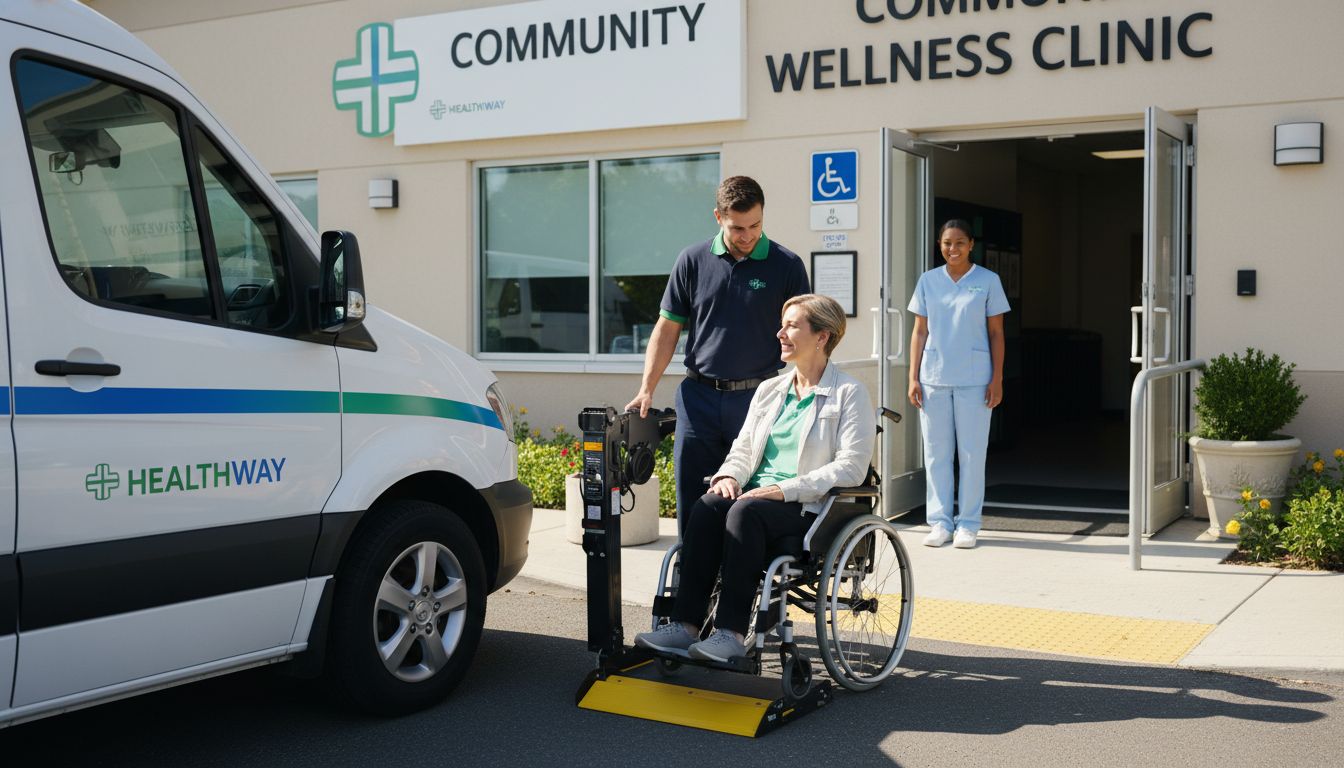Improving Patient Outcomes: Strategies for Healthcare Leaders 2025

Patient outcomes sit at the heart of every healthcare decision. Yet even with soaring medical spending, hospitals using multiple care coordination strategies are about 2.5 times more likely to achieve top quality ratings and lower readmission rates. That means the real breakthroughs come not from costly new drugs or gadgets, but from integrating technology, teamwork, and patient voices in ways most leaders still overlook.
Table of Contents
- Best Practices For Improving Patient Outcomes
- Leveraging Technology And Data For Better Care
- The Role Of Care Coordination Across Services
- Engaging Patients And Families In Health Decisions
Quick Summary
| Takeaway | Explanation |
|---|---|
| Integrate Clinical Decision Support Systems | Implementing CDSS enhances practitioner performance by providing real-time, evidence-based recommendations, leading to improved patient outcomes and reduced medical errors. |
| Emphasize Patient-Centered Care | Tailoring healthcare services to individual patient needs and preferences increases patient satisfaction and treatment adherence, ultimately improving health outcomes. |
| Leverage Technology for Care Coordination | Utilizing advanced technologies like electronic health records and telemedicine facilitates seamless communication among providers, reducing treatment gaps and improving coordinated care. |
| Engage Patients and Families in Health Decisions | Involving patients and their families in collaborative decision-making enhances safety and quality, ensuring care aligns with patient preferences and values. |
| Address Social Determinants through Integrated Care | Recognizing and addressing social factors such as food security and housing stability improves overall patient health and supports effective care strategies. |

Best Practices for Improving Patient Outcomes
Healthcare leaders recognize that improving patient outcomes requires strategic approaches that go beyond traditional medical interventions. Modern healthcare demands comprehensive strategies integrating technology, patient engagement, and evidence-based practices.
Clinical Decision Support Systems: Enhancing Practitioner Performance
Clinical Decision Support Systems (CDSS) represent a critical technological advancement for improving patient care. Research published in systematic reviews demonstrates that implementing CDSS can significantly enhance practitioner performance and patient outcomes. These intelligent systems provide real-time, evidence-based recommendations directly at the point of care, helping healthcare professionals make more informed decisions.
By analyzing patient data, medical history, and current clinical guidelines, CDSS offers actionable insights that reduce medical errors and standardize treatment protocols. A comprehensive study found that CDSS improved practitioner performance in 64% of evaluated cases, highlighting its potential to transform clinical decision-making processes.
Patient-Centered Care: Personalizing Healthcare Experiences
Patient-centered care models represent a fundamental shift in healthcare delivery. According to research from the Centers for Medicare and Medicaid Services, tailoring healthcare services to individual patient needs and preferences dramatically improves patient satisfaction and engagement.
Key components of patient-centered care include:
- Active Participation: Empowering patients to be active participants in their healthcare decisions
- Personalized Communication: Developing clear, compassionate communication strategies
- Holistic Assessment: Considering patient’s emotional, psychological, and social needs alongside medical requirements
Healthcare organizations implementing patient-centered approaches have reported significant improvements in treatment adherence, patient satisfaction, and overall health outcomes.
Care Coordination: Bridging Healthcare Gaps
Effective care coordination is essential for delivering comprehensive and seamless healthcare services. Research indicates that robust communication and coordination among healthcare providers can substantially reduce treatment gaps and improve patient outcomes.
Modern healthcare technologies play a crucial role in facilitating this coordination. Electronic health records, telemedicine platforms, and integrated communication systems enable healthcare professionals to share critical patient information securely and efficiently. This interconnected approach ensures that patients receive consistent, high-quality care across different healthcare settings and providers.

By implementing these best practices healthcare leaders can create more responsive, efficient, and patient-focused healthcare environments. The combination of advanced technology, personalized care models, and strategic coordination represents a powerful approach to improving patient outcomes in an increasingly complex healthcare ecosystem.
To provide a clear overview, the table below summarizes the best practices, their core features, and the main benefits highlighted in this section.
| Best Practice | Core Features | Main Benefits |
|---|---|---|
| Clinical Decision Support Systems (CDSS) | Real-time, evidence-based recommendations; data analysis for insights | Reduced errors, standardized protocols, improved outcomes |
| Patient-Centered Care | Active participation; personalized communication; holistic assessment | Greater satisfaction, adherence, health outcomes |
| Care Coordination | Integrated technologies; seamless info sharing; provider communication | Fewer gaps in care, consistent quality, better transitions |
Leveraging Technology and Data for Better Care
The healthcare industry stands at a critical intersection of technological innovation and data-driven decision-making. Transforming patient care requires strategic integration of advanced technologies that can analyze complex medical information, predict outcomes, and personalize treatment approaches.
Artificial Intelligence in Healthcare Transformation
Research from the Agency for Healthcare Research and Quality demonstrates the profound potential of artificial intelligence to revolutionize healthcare delivery. AI technologies are increasingly capable of analyzing unstructured clinical data, providing unprecedented insights that enhance clinician productivity and patient engagement.
Artificial intelligence offers multiple critical capabilities in healthcare:
- Predictive Analytics: Identifying potential health risks before they become critical
- Treatment Optimization: Recommending personalized treatment protocols based on comprehensive data analysis
- Early Disease Detection: Utilizing machine learning algorithms to recognize subtle patterns in medical imaging and patient records
Healthcare organizations implementing AI-driven solutions report significant improvements in diagnostic accuracy, treatment planning, and overall patient outcomes.
Dynamic Healthcare Data Integration
Researchers at Weill Cornell Medicine emphasize the importance of creating integrated, dynamic healthcare databases. By combining diverse data sources, practitioners can rapidly identify effective treatments, reduce unnecessary medical interventions, and develop more precise care strategies.
Effective data integration involves:
- Comprehensive Data Collection: Aggregating information from electronic health records, wearable devices, and clinical research
- Secure Information Sharing: Establishing robust protocols for protecting patient privacy while enabling meaningful data exchange
- Real-Time Analysis: Developing systems that can provide immediate insights and recommendations
Learning Health Systems: Continuous Improvement
Academic medical centers are increasingly adopting learning health system principles, which transform healthcare delivery into a continuously evolving ecosystem. These systems utilize real-time data analysis to create a feedback loop that constantly refines medical practices, treatment protocols, and patient care strategies.
Key characteristics of learning health systems include:
- Continuous Monitoring: Tracking patient outcomes and treatment effectiveness
- Adaptive Protocols: Quickly implementing evidence-based improvements
- Interdisciplinary Collaboration: Encouraging knowledge sharing across different medical specialties
By embracing these technological and data-driven approaches, healthcare organizations can create more responsive, efficient, and patient-centered care models. The future of healthcare lies in intelligent systems that can learn, adapt, and continuously improve patient outcomes through sophisticated data analysis and technological innovation.
The Role of Care Coordination Across Services
Effective care coordination represents a critical strategy for transforming healthcare delivery and improving patient outcomes. By creating seamless communication and collaboration across different healthcare services, organizations can provide more comprehensive, patient-centered care that addresses complex medical needs.
Comprehensive Care Management Strategies
Research from the Agency for Healthcare Research and Quality highlights the essential role of care coordination in delivering high-quality, patient-centered healthcare. Effective coordination involves strategic teamwork, advanced care management techniques, and sophisticated health information technologies that enable healthcare providers to work together more efficiently.
Comprehensive care management requires multiple interconnected approaches:
- Integrated Communication: Establishing clear channels for information sharing between different healthcare providers
- Holistic Patient Assessment: Developing comprehensive patient profiles that consider medical, social, and environmental factors
- Proactive Intervention: Identifying potential health risks and addressing them before they escalate
Reducing Hospital Readmissions Through Strategic Coordination
Clinical studies demonstrate that hospitals implementing multiple care coordination strategies can significantly improve patient outcomes. Organizations utilizing comprehensive coordination techniques are approximately 2.5 times more likely to receive top quality ratings and exhibit lower 30-day readmission rates for chronic conditions.
Key strategies for reducing hospital readmissions include:
- Medication Reconciliation: Ensuring accurate and consistent medication management across different care settings
- Discharge Planning: Developing robust follow-up protocols that support patients during transition periods
- Continuous Patient Monitoring: Implementing systems that track patient progress and identify potential complications early
Addressing Social Determinants Through Integrated Care
Emerging research underscores the importance of integrating social determinants of health into care coordination programs. By addressing broader factors that impact patient well-being, healthcare providers can develop more comprehensive and effective care strategies.
Social determinants integration involves:
- Food Security Assessment: Connecting patients with nutritional resources and support
- Housing Support: Identifying and addressing housing challenges that may impact health outcomes
- Economic Stability Evaluation: Understanding how financial constraints might affect patient care and treatment adherence
Successful care coordination requires a multidisciplinary approach that goes beyond traditional medical interventions. By creating robust systems that connect healthcare providers, leverage technology, and consider the holistic needs of patients, organizations can develop more responsive and effective healthcare delivery models.
The future of healthcare lies in these interconnected, patient-centered approaches that prioritize comprehensive care, proactive intervention, and personalized support across multiple service domains.
The following table summarizes key care coordination strategies and their impact on patient outcomes as discussed in this section.
| Care Coordination Strategy | Description | Reported Impact |
|---|---|---|
| Medication Reconciliation | Ensuring medication consistency across care settings | Reduces medication errors, improves transitions |
| Discharge Planning | Structuring follow-up protocols during care transitions | Lowers 30-day readmission rates |
| Continuous Patient Monitoring | Ongoing tracking of patient status and risks | Early complication identification |
| Social Determinants Integration | Addressing food, housing, financial needs alongside medical care | Enhances health and adherence |
| Integrated Communication | Facilitating timely info sharing among providers | Closes treatment gaps, improves coordination |
Engaging Patients and Families in Health Decisions
Patient and family engagement represents a transformative approach to healthcare delivery, shifting from traditional provider-centric models to collaborative, participatory care strategies. By actively involving patients and their families in health decisions, healthcare organizations can create more personalized, effective, and meaningful care experiences.
Foundations of Patient-Centered Decision Making
According to the Agency for Healthcare Research and Quality, engaging patients and families in healthcare decisions leads to measurable improvements in safety and quality. This approach recognizes patients as critical partners in their own health management, empowering them with knowledge, tools, and opportunities to make informed choices.
Key principles of patient-centered decision making include:
- Transparent Communication: Providing clear, understandable information about medical conditions and treatment options
- Shared Decision Making: Collaboratively exploring treatment alternatives that align with patient preferences and values
- Respect for Individual Autonomy: Acknowledging patients’ rights to make informed choices about their healthcare
Structural Approaches to Patient and Family Engagement
The National Academy of Medicine highlights the critical role of Patient and Family Advisory Councils (PFACs) in integrating patient perspectives into healthcare governance. These structured platforms enable direct input from patients and families, helping organizations understand and address their unique needs and experiences.
Effective patient engagement strategies involve:
- Systematic Feedback Mechanisms: Creating formal channels for patients to share experiences and suggestions
- Leadership Integration: Including patient representatives in strategic planning and policy development
- Continuous Education: Developing programs that enhance patients’ health literacy and self-management skills
Advancing Patient Safety Through Collaborative Engagement
The Institute for Healthcare Improvement recommends comprehensive patient and family engagement at all care levels to advance patient safety. This approach transforms patients from passive recipients of care to active participants in their health journey.
Strategies for enhancing patient safety through engagement include:
- Pre-Procedure Consultations: Encouraging patients to ask questions and confirm understanding of medical procedures
- Medication Management: Involving patients in medication reconciliation and side effect monitoring
- Care Transition Support: Providing resources and guidance during critical healthcare transitions
Successful patient and family engagement requires a cultural shift within healthcare organizations. It demands commitment from leadership, investment in communication technologies, and a genuine dedication to listening and responding to patient perspectives.
By embracing these collaborative approaches, healthcare providers can create more responsive, personalized, and effective care environments that prioritize patient autonomy, safety, and overall well-being. The future of healthcare lies in recognizing patients as essential partners in their health management, not just recipients of medical interventions.
Frequently Asked Questions
What are clinical decision support systems and how do they improve patient outcomes?
Clinical decision support systems (CDSS) provide real-time, evidence-based recommendations to healthcare practitioners at the point of care, helping to enhance decision-making, reduce medical errors, and standardize treatment protocols, ultimately improving patient outcomes.
How can patient-centered care enhance healthcare experiences?
Patient-centered care focuses on tailoring healthcare services to individual needs and preferences, which increases patient satisfaction, treatment adherence, and overall health outcomes by actively involving patients in their healthcare decisions.
Why is care coordination important in healthcare?
Care coordination is crucial as it ensures seamless communication and collaboration among healthcare providers, reducing treatment gaps, improving the quality of care, and leading to better patient outcomes.
How does engaging patients and families in health decisions impact safety?
Engaging patients and families in health decisions promotes transparency, shared decision-making, and respect for individual autonomy, which leads to better patient safety, improved quality of care, and more personalized healthcare experiences.
Transform Your Patient Outcomes with VectorCare’s Digital Platform
Are you facing gaps in care coordination or struggling to reduce delays across different healthcare settings? The article highlighted urgent challenges such as fragmented care, inefficient logistics, and the demand for real-time technologies to boost patient-centered results. VectorCare offers proven solutions that directly address these pain points with powerful digital logistics designed for healthcare leaders who want better outcomes, not bigger headaches.

Instead of letting outdated manual processes hold you back, discover how VectorCare’s platform empowers teams to schedule, automate, and communicate in real time, whether you are managing patient transportation, coordinating home health, or delivering medical equipment. Unlock secure, data-driven workflows tailored to the needs of providers, payers, and agencies. Visit VectorCare now to see how you can upgrade your care delivery, reduce avoidable readmissions, and respond faster to patient needs. Your next level of efficiency and patient satisfaction starts here.



